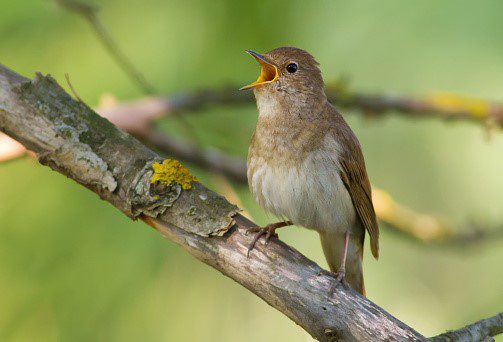‘The ultimate slow radio’ is how a new project launched earlier this year has been described. Based at the Knepp Estate rewilding project in West Sussex, Wilding Radio combines art, science and technology to enable its listeners to hear the sounds of returning biodiversity.
Anyone who cares about nature and the environment is concerned about our loss of biodiversity – but also aware of some of the measures being undertaken to counteract it. The rewilding of former farmland at the Knepp Estate in West Sussex is an impressive example; those fortunate to go there have been able to hear nightingales, possibly for the first time in their lives, and to admire the changes the beavers, introduced in 2022, have already made to the ecosystem. And those of us unable to visit have at least been able to view photographs and videos taken there.
What has been missing so far is access to the sounds of Knepp’s wildlife, but this too is now possible, thanks to Wilding Radio, led by Dr Alice Eldridge of the University of Sussex.

Nightingales (picture above) and beavers are only two of the new arrivals that you can hear on Wilding Radio. Both images courtesy of Pixabay.com
Ecoacoustics is the practice of using sound to understand ecosystems, including changes in biodiversity and Dr Eldridge is a leading expert in this lesser-known science. So far, her team has installed two high-tech sets of audio devices near the beaver dam on the Knepp Estate, one a pair of microphones above the water in a fallen willow tree and the other a solar-powered underwater quadraphonic live feed in a brook. Both will help researchers to answer a number of questions. For example, according to Dr Eldridge: “How will this changing landscape affect the local fauna? Can we hear these changes? Will the growing wetland create habitat for new species? Might we start to hear the tick of water beetles and the scrape of water boatmen? How might the changing wetland affect the behaviour of birds and mammals in the area? Might new invertebrates bring new birds? What ecological changes might new birds bring?”
The hydrophones reflect the sounds of the new wetland that the beavers have created; you can hear the sounds of the water itself and some of the fresh-water organisms. The microphones in the tree help to identify the birds and mammals living nearby who visit the water, as well as the weather in the trees.
And we too can reconnect to nature and experience the calming effect of the sounds of the wild! Wilding Radio is thought to be the first ever radio platform dedicated to the sounds of rewilding and is available live twenty-four hours a day, seven days a week. To quote Alice Eldridge again: “In the springtime, listen out for blackbirds, song thrushes and woodpeckers during the day and owls and nightingales during the night. Summer brings the turr-turring of turtle doves and the squeals of teenage piglets; the autumn, the guttural coughs and bellows of rutting deer. And, all the while, small freshwater invertebrates munch tirelessly in the stream”.
Isabella Tree, co-owner of the Knepp Estate, is delighted with the innovation. “We’re thrilled that Wilding Radio will be helping to connect wider audiences with the abundant birdsong and the sounds of aquatic life emanating from Knepp. We hope listeners will find it both relaxing, reassuring and hopeful – knowing that nature can rebound, if we let it.”
To find out more about Wilding Radio, go to https://www.sussex.ac.uk/broadcast/read/61073, and to listen to it, click on: https://wilding.radio/#knepp.
 Alton Climate Action Network
Alton Climate Action Network